From Sketch to 3D in Seconds: Tripo Studio's New Features
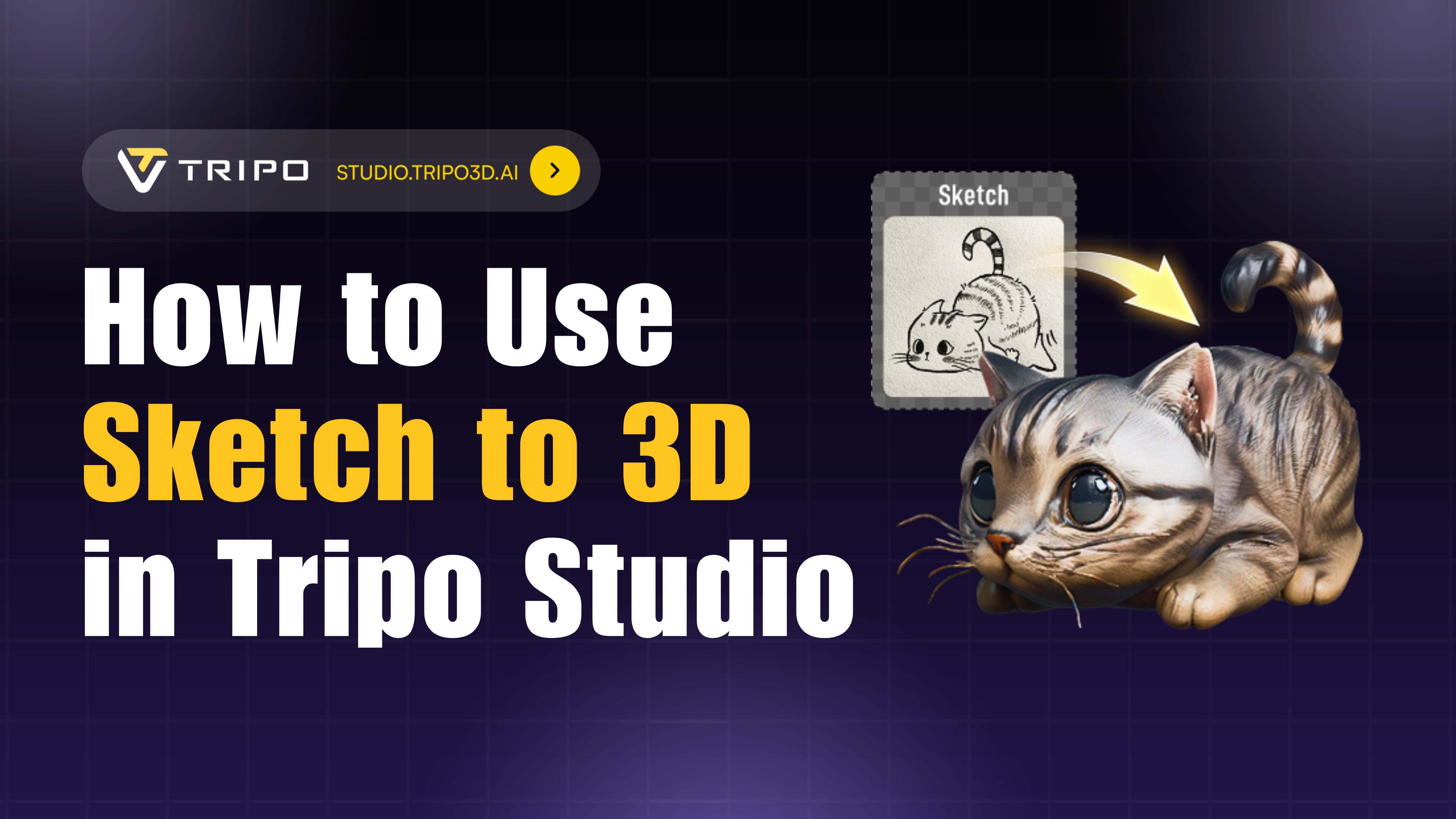
Ever wished you could transform that quick napkin sketch into a professional 3D model without spending hours in complex software? That moment is here. With Tripo Studio's groundbreaking integration of Google's Nano Banana, your rough drawings can become stunning, textured 3D assets in just minutes—no 3D expertise required.
The Game-Changing Announcement
Tripo Studio just revolutionized the creative pipeline by integrating Google's Nano Banana directly into the Generation workspace. This isn't just another feature update—it's a complete reimagining of how we bridge the gap between 2D concepts and 3D reality.
Here's the magic: Instead of struggling to convert sparse sketches directly into 3D models (which often results in flat, lifeless geometry), this new workflow uses Nano Banana to first transform your sketch into a rich, detailed image. Then Tripo's powerful image to 3D technology converts that enhanced image into a high-quality, textured model with proper materials and lighting.
The result? Your simple line drawing becomes a production-ready 3D asset with realistic textures, proper topology, and professional-grade detail—all within the same interface.
Understanding the Power Behind the Magic
What is Nano Banana?
Google's Nano Banana represents the latest evolution in Gemini's image generation capabilities. This powerful model doesn't just create images from text—it excels at:
- Sketch-to-image transformation: Converting line art into photorealistic or stylized images
- Multi-modal editing: Combining text prompts with visual inputs for precise control
- Iterative refinement: Making targeted adjustments without starting over
- Material and lighting understanding: Adding realistic surfaces and illumination
Why Nano Banana + Tripo = Perfect Match
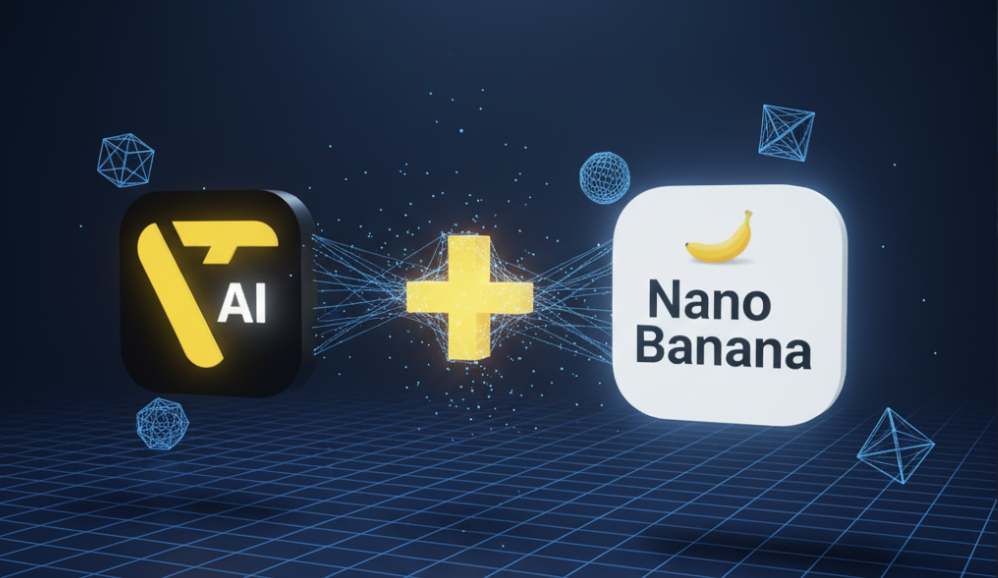
When you feed a basic sketch directly to most AI 3D model generators, they struggle with ambiguity. Is that line a shadow or an edge? What material should this surface be?
Nano Banana solves this by adding crucial visual information:
- Clear material definitions (metal, fabric, plastic)
- Proper lighting that reveals form
- Consistent viewpoints for better 3D interpretation
- Enhanced details that guide topology generation
This enriched image gives Tripo's image to 3D algorithm exactly what it needs to create superior models with accurate geometry and convincing PBR textures.
Step-by-Step: Your First Sketch to 3D Conversion
Ready to transform your sketches? Follow this proven workflow:
Step 1: Prepare Your Sketch
Success starts with a well-prepared drawing:
Pro tip: Think of your sketch as a blueprint. The clearer your intentions, the better both Nano Banana and Tripo can interpret them.
Step 2: Transform with Nano Banana
- Open Tripo Studio and navigate to the Generation workspace
- Select Image/Text to 3D from the left panel
- Upload your sketch - it appears in the preview pane
- Click the Nano Banana control to enable the integrated editor
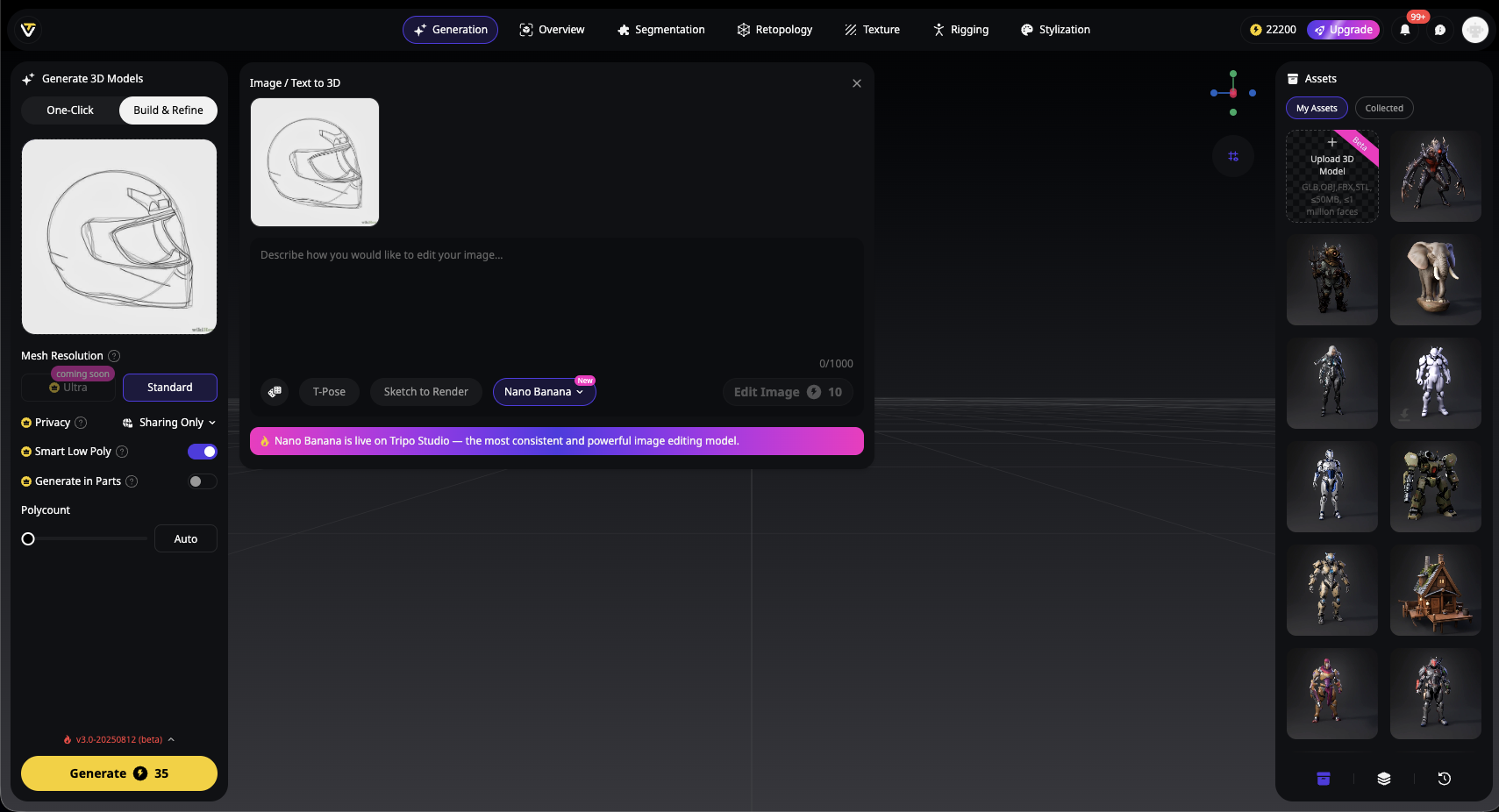
Now comes the crucial part—writing a prompt that tells Nano Banana to transform your sketch into a realistic image. The key is to start with clear transformation language, then add specific details about materials, lighting, and style.
For the helmet sketch example:
"Transform this sketch into a photorealistic motorcycle helmet,
glossy black finish with metallic accents, tinted visor with
reflections, carbon fiber texture on sides, aerodynamic vents,
front three-quarter view, professional product photography
lighting, high detail, white background"
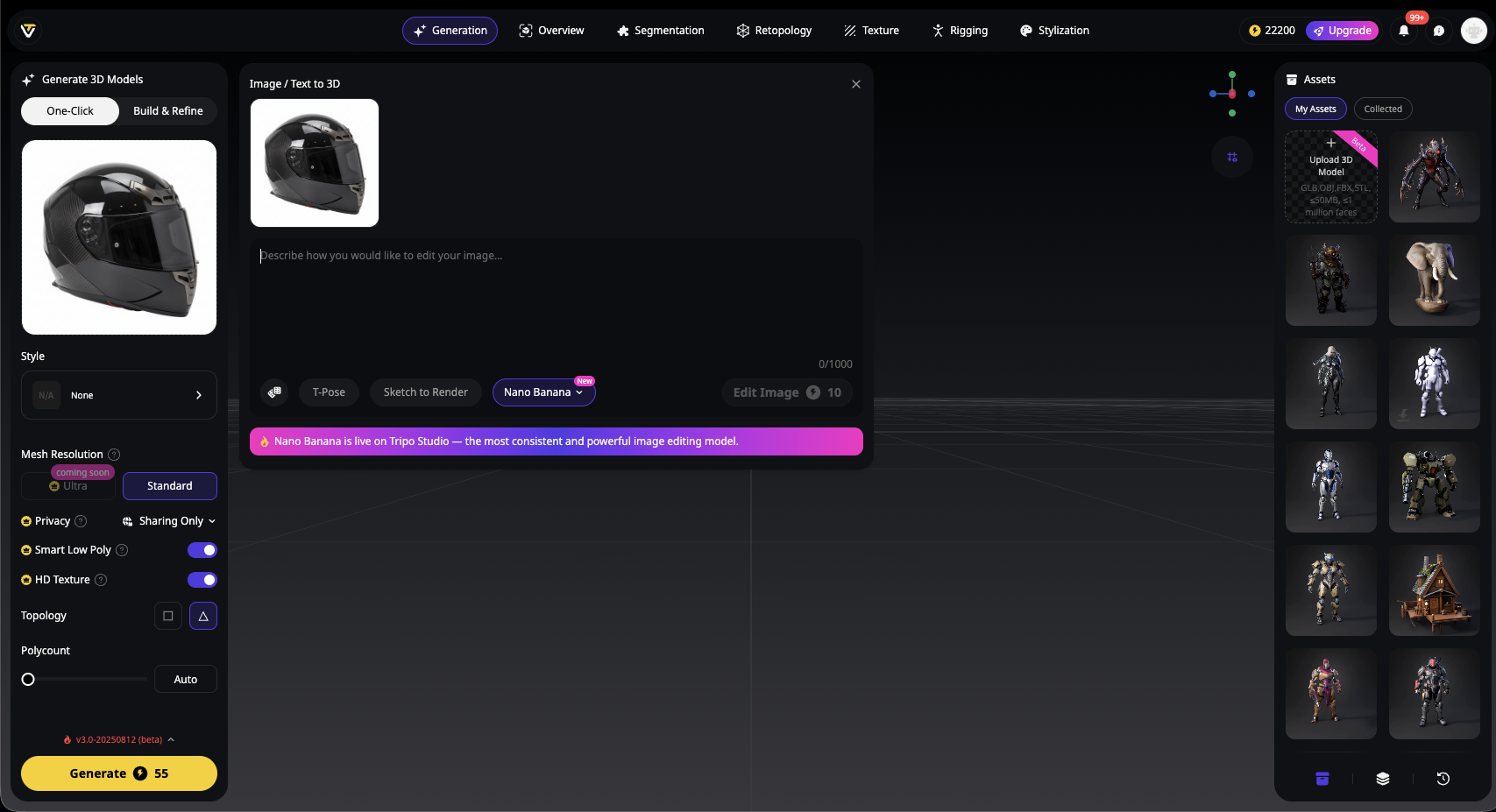
- Click "Edit Image" to generate your enhanced 2D result
- Review and iterate - adjust your prompt for better results
Pro tip: Always start your prompt with action words like "transform," "turn," or "convert" to clearly instruct Nano Banana that you want to enhance your sketch into a realistic image. Then layer in specific details about materials, colors, textures, and lighting to guide the generation.
The interface clearly shows credit costs for each action, keeping you informed throughout the process.
Step 3: Generate Your 3D Model
Once your Nano Banana image looks perfect:
- Click "Generate" at the bottom of the interface
- Watch as Tripo's image to 3D technology works its magic (100-120 seconds)
- Review your textured 3D model in the viewport
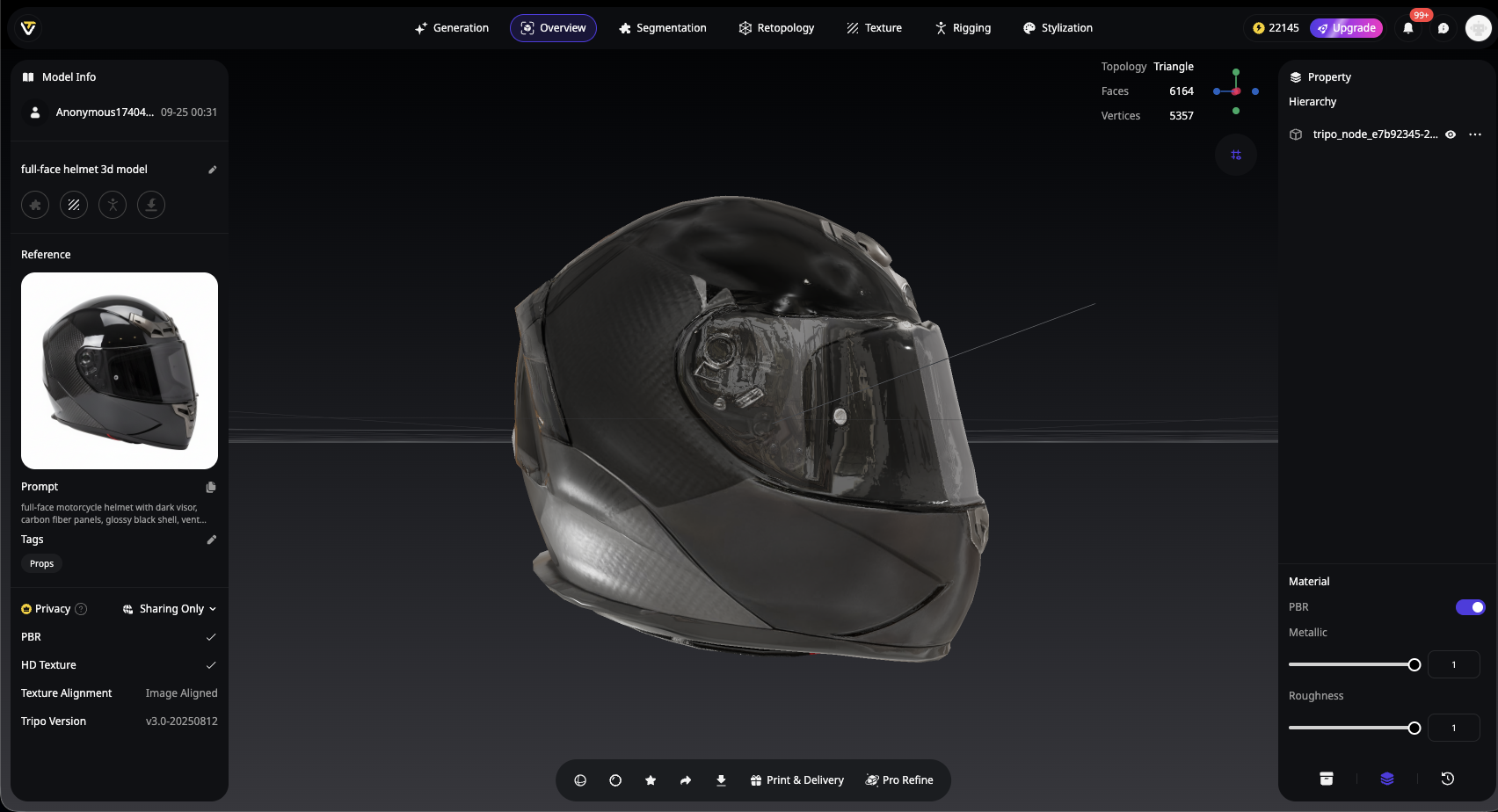
-
Refine if needed using Tripo's additional tools:
- Intelligent segmentation for part editing
- Uni-Rig for character animation
- Magic Brush for texture touch-ups
Pro Tips for Outstanding Results
Prompt Engineering Mastery
The secret to exceptional sketch to 3D AI results lies in your Nano Banana prompts:
- Specify viewpoint: "front three-quarter view" or "side profile"
- Define materials explicitly: "brushed aluminum," "matte plastic," "worn leather"
- Describe lighting: "softbox from left," "rim lighting," "neutral studio setup"
- Add style modifiers: "photorealistic," "anime-inspired," "painterly"
Iteration Strategy
Don't aim for perfection on the first try. Instead:
- Start with basic material and form
- Add one element at a time
- Test how style changes affect final topology
- Save variations for different use cases
Common Pitfalls to Avoid
Real-World Applications
This workflow transforms various creative industries:
**Game Development: **Concept artists can now generate game-ready assets from initial sketches, accelerating the pipeline from weeks to hours.
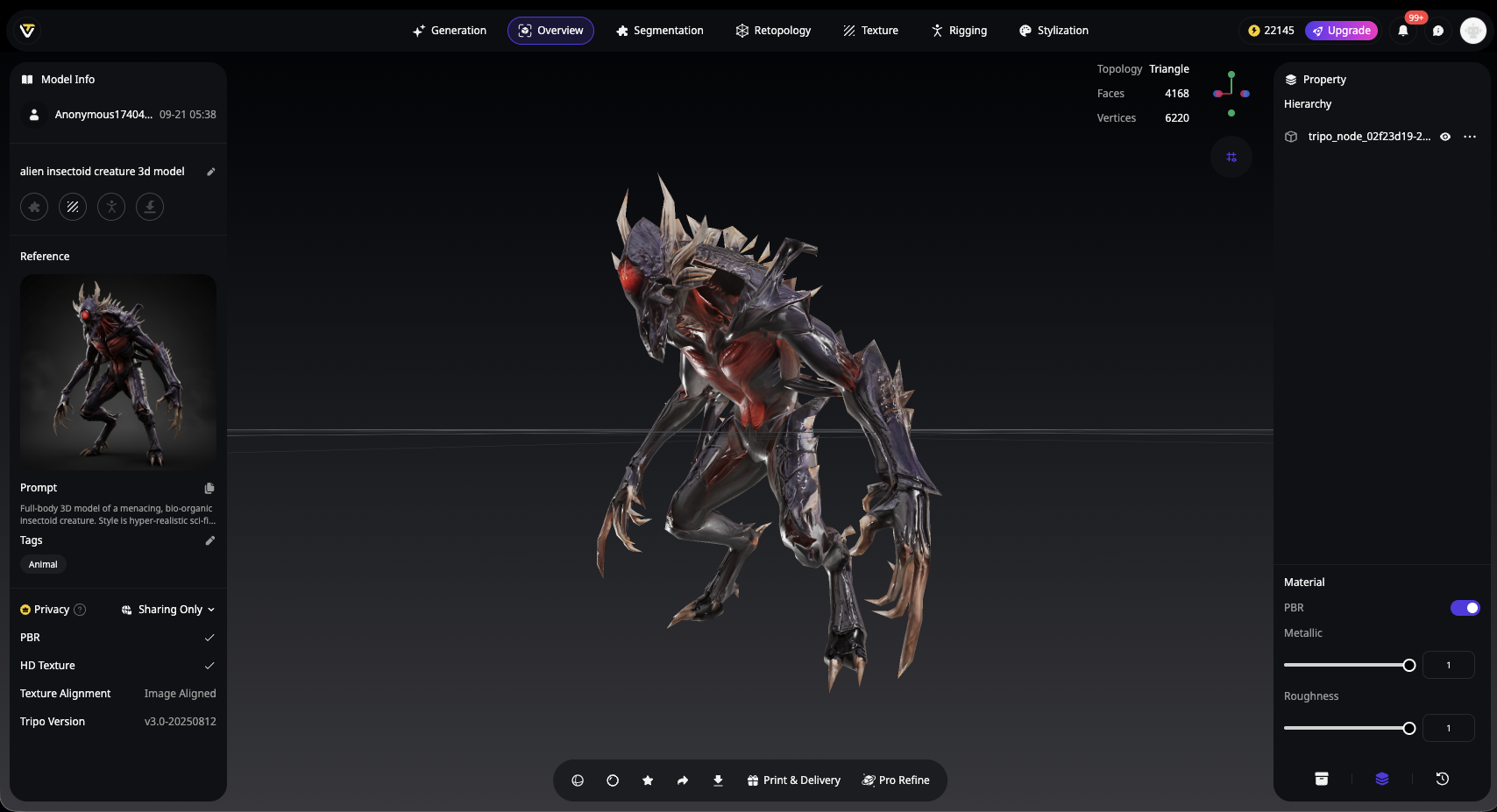
**Product Design: **Industrial designers sketch ideas and instantly see them as textured 3D prototypes, perfect for client presentations.
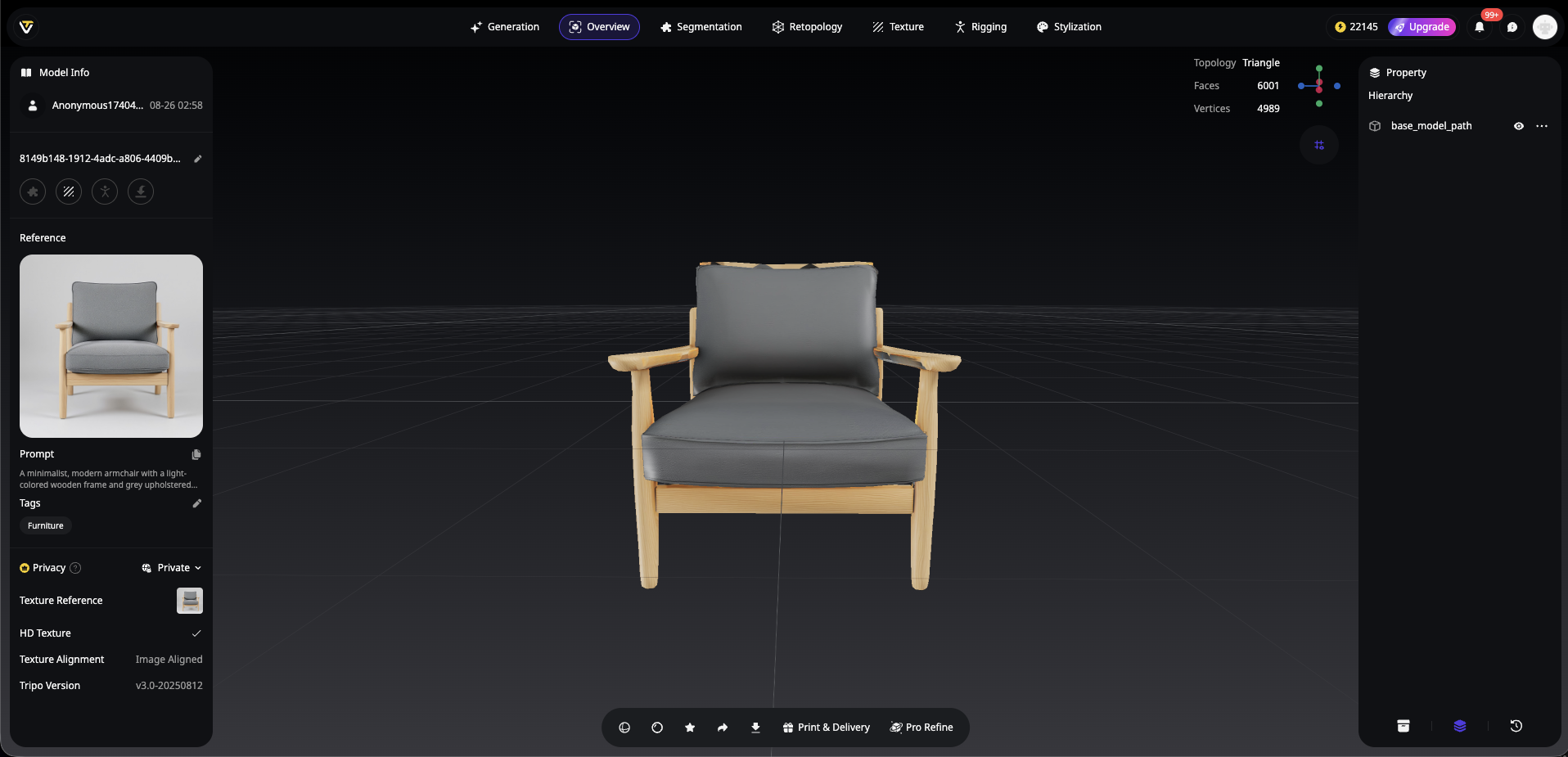
**Animation Studios: **Character designers transform 2D concepts into rigged 3D models ready for animation tests.
Architecture: Quick facade sketches become detailed 3D visualizations with proper materials and lighting.
Frequently Asked Questions
Q: What sketch types work best for this workflow?
- Clean line art with strong silhouettes yields the best results. Nano Banana interprets clear structures more reliably, leading to superior image to 3D conversions.
Q: Can I skip Nano Banana and use photos directly?
- Absolutely! Tripo Studio's image to 3D feature works great with photos. However, the Nano Banana step is invaluable when starting from sketches, as it bridges the gap between sparse line art and detailed reference images.
Q: What about commercial use?
- Tripo's Professional and higher plans include commercial usage rights, making this workflow suitable for production pipelines. Check your plan details at tripo3d.ai/pricing.
Q: How many credits does the full workflow use?
- The UI displays credit costs transparently—typically a few credits for Nano Banana image generation, plus standard generation credits for the 3D conversion.
Advanced Techniques
Multi-View Generation
For complex models, consider generating multiple views:
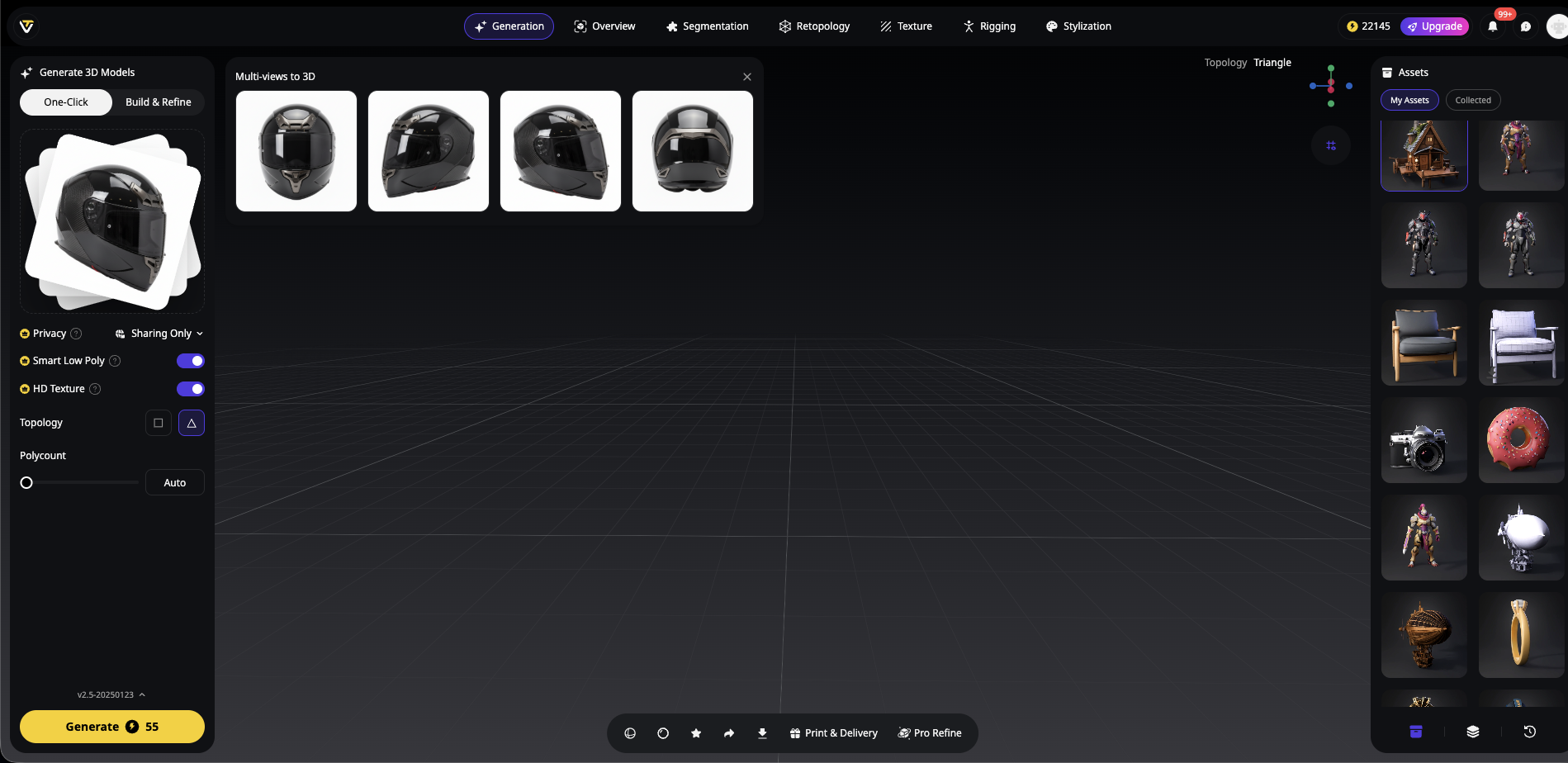
- Create front view with Nano Banana
- Adjust prompt for side view
- Use Tripo's multi-image image to 3D for enhanced accuracy
Style ExpMy friendloration
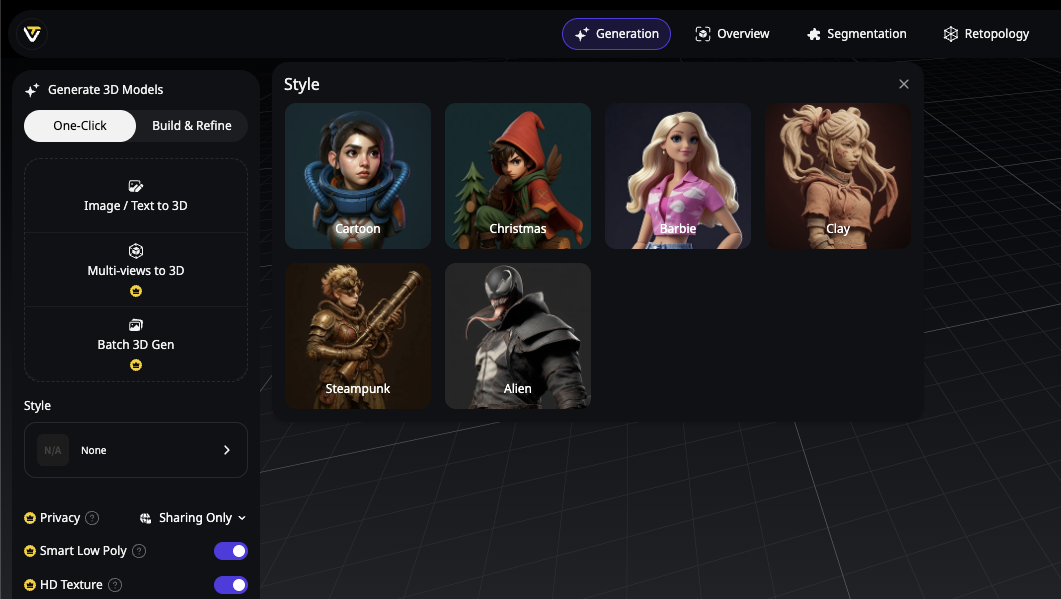
Experiment with different artistic styles to see how they affect your 3D output:
- Photorealistic: Best for product visualization
- Anime/Cartoon: Great for game assets
- Painterly: Ideal for artistic projects
Material Libraries
Build a personal prompt library for common materials:
- "Anodized aluminum with subtle scratches"
- "Worn leather with visible grain"
- "Translucent plastic with internal diffusion"
The Future of 3D Creation is Here
This integrated sketch to 3D AI workflow represents more than technical innovation—it's democratizing 3D creation. No longer do you need years of modeling experience or expensive software. Your creativity and a simple sketch are enough.
The combination of Nano Banana's intelligent image generation with Tripo's industry-leading AI 3D model generator technology means:
- Faster iteration cycles: Test multiple concepts in the time it used to take for one
- Lower barriers to entry: Anyone can create professional 3D content
- Preserved artistic vision: Your original sketch intent carries through to the final model
Ready to Transform Your Sketches?
The future of 3D creation isn't coming—it's here, integrated seamlessly in Tripo Studio. Whether you're a concept artist tired of the traditional pipeline, a designer wanting quick 3D prototypes, or a hobbyist with big ideas, this workflow puts professional 3D modeling at your fingertips.
Take action today:
- Head to Tripo Studio
- Upload your favorite sketch
- Watch as Nano Banana and Tripo transform it into a stunning 3D model
Join over 2 million creators who've already discovered the power of Tripo's image to 3D technology. Your sketches are waiting to come to life—what will you create first?
Want to dive deeper into Tripo's capabilities? Explore our Image to 3D feature page or check out Google's Gemini image generation guide for advanced Nano Banana techniques.
Advancing 3D generation to new heights
moving at the speed of creativity, achieving the depths of imagination.

